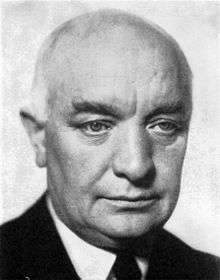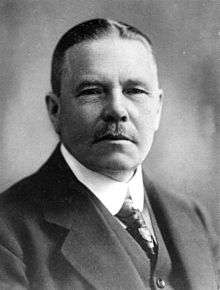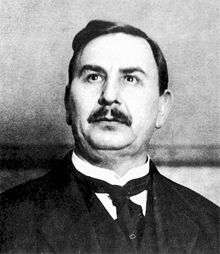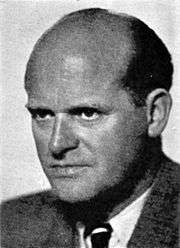Swedish general election, 1928

|
|
|
All 230 seats in the Riksdag |
|---|
|
|
|

Election poster from the Conservative (or Right) Party. The text reads: "DALECARLIANS - Your forefathers have once saved Sweden from
Christian the Tyrant. Redo your great work: Everyone who votes for the "Workers' Party" votes for the revolution of society, and the introduction of Bolshevism. SAVE THE FATHERLAND!"
General elections were held in Sweden between 15 and 21 September 1928.[1] The Swedish Social Democratic Party remained the largest party, winning 90 of the 230 seats in the Second Chamber of the Riksdag.[2] Arvid Lindman of the General Electoral League became Prime Minister, replacing the incumbent, Carl Gustaf Ekman of the Free-minded National Association. The elections have since become known as the "Cossack Election" due to the harsh tone and aggressive criticism used by both sides.
Results
| Party |
Votes |
% |
Seats |
+/– |
|---|
| Swedish Social Democratic Party | 873,931 | 37.0 | 90 | –14 |
| General Electoral League | 692,434 | 29.4 | 73 | +8 |
| Free-minded National Association | 303,995 | 12.9 | 28 | –1 |
| Farmers' League | 263,501 | 11.2 | 27 | +4 |
| Communist Party of Sweden | 151,567 | 6.4 | 8 | +4 |
| Liberal Party of Sweden | 70,820 | 3.0 | 4 | 0 |
| Other parties | 2,563 | 0.1 | 0 | 0 |
| Invalid/blank votes | 4,490 | – | – | – |
| Total | 2,363,301 | 100 | 230 | 0 |
| Registered voters/turnout | 3,505,672 | 67.4 | – | – |
| Source: Nohlen & Stöver |
| Popular vote |
|---|
|
|
|
|
|
| S |
|
37.05% |
| AV |
|
29.36% |
| FL |
|
12.89% |
| B |
|
11.17% |
| SKP |
|
6.43% |
| LP |
|
3.00% |
| Others |
|
0.11% |
|
| Parliament seats |
|---|
|
|
|
|
|
| S |
|
39.13% |
| AV |
|
31.74% |
| FL |
|
12.17% |
| B |
|
11.74% |
| SKP |
|
3.48% |
| LP |
|
1.74% |
|
References
- ↑ Nohlen, D & Stöver, P (2010) Elections in Europe: A data handbook, p1858
ISBN 978-3-8329-5609-7
- ↑ Nohlen & Stöver, p1872




